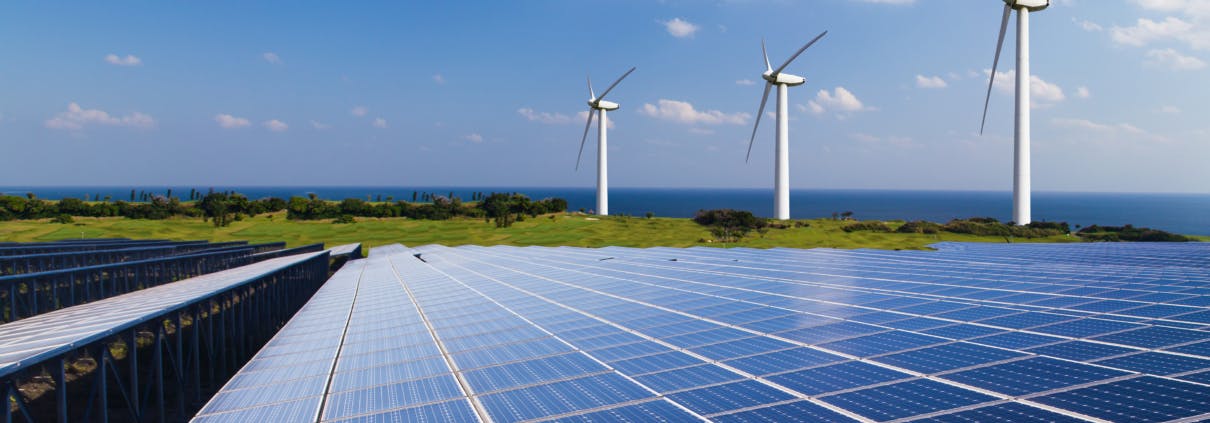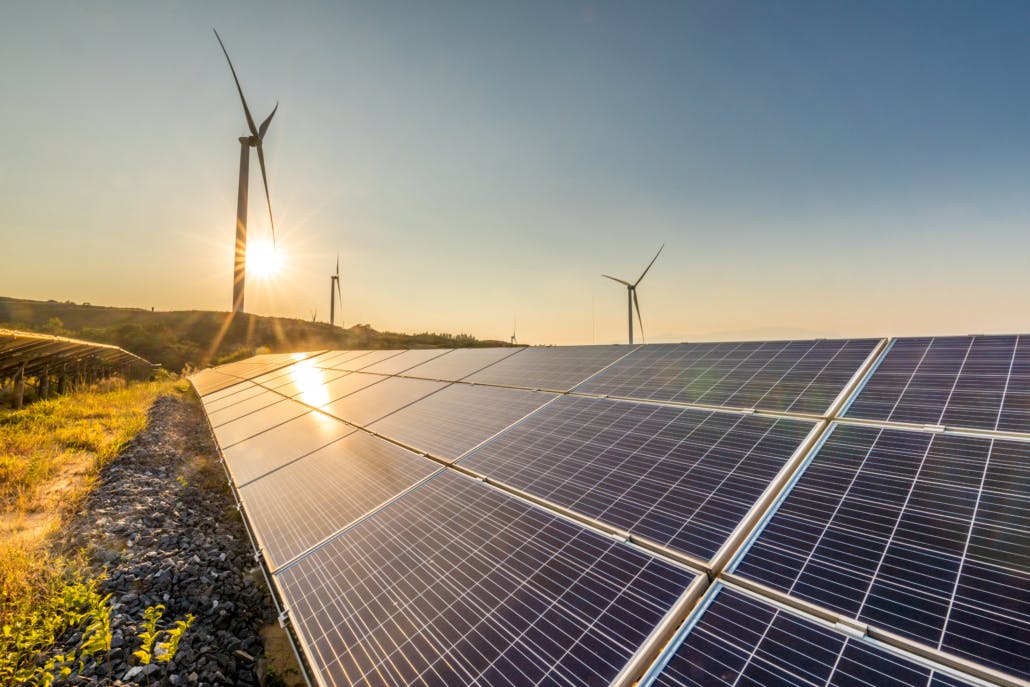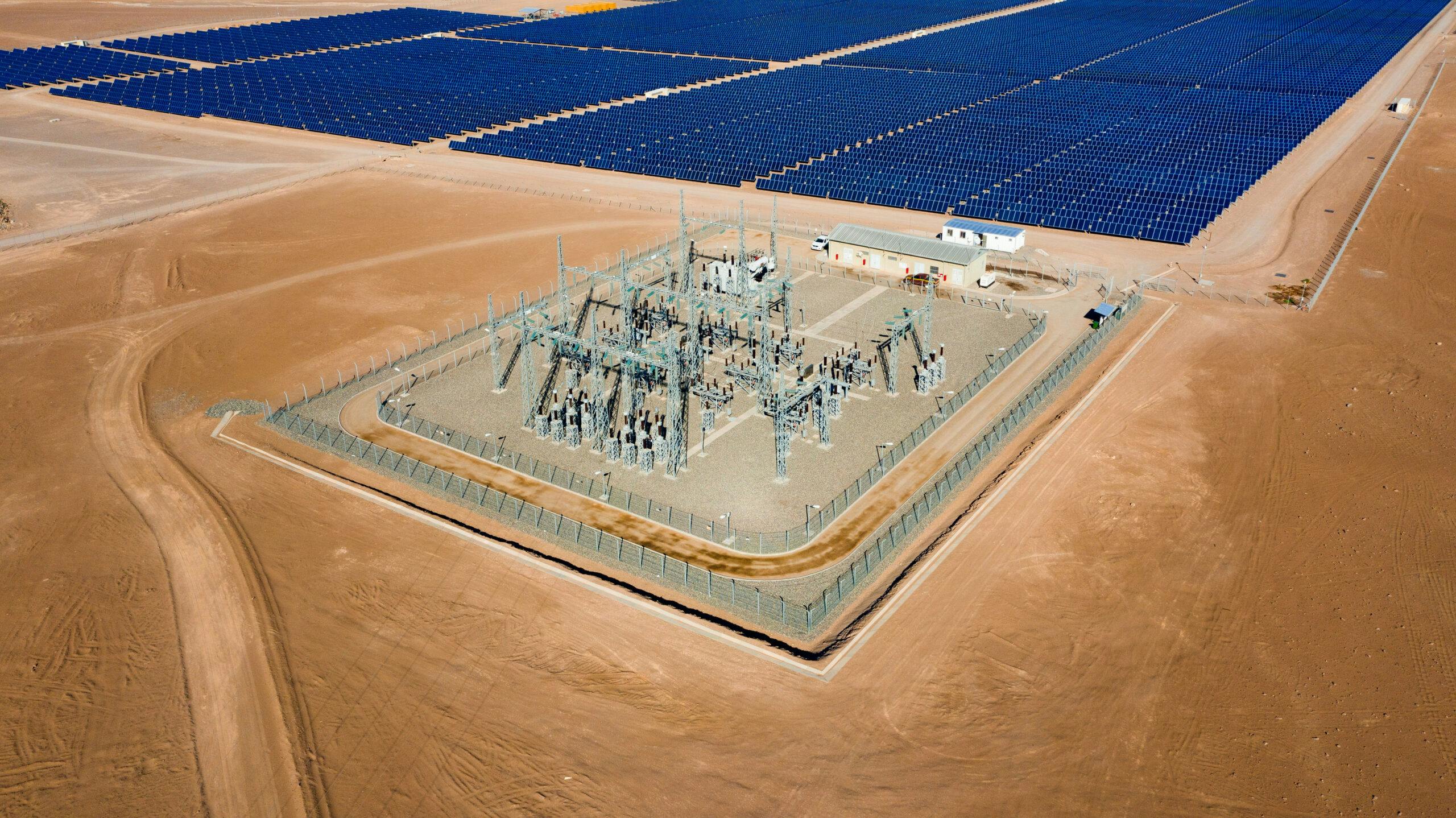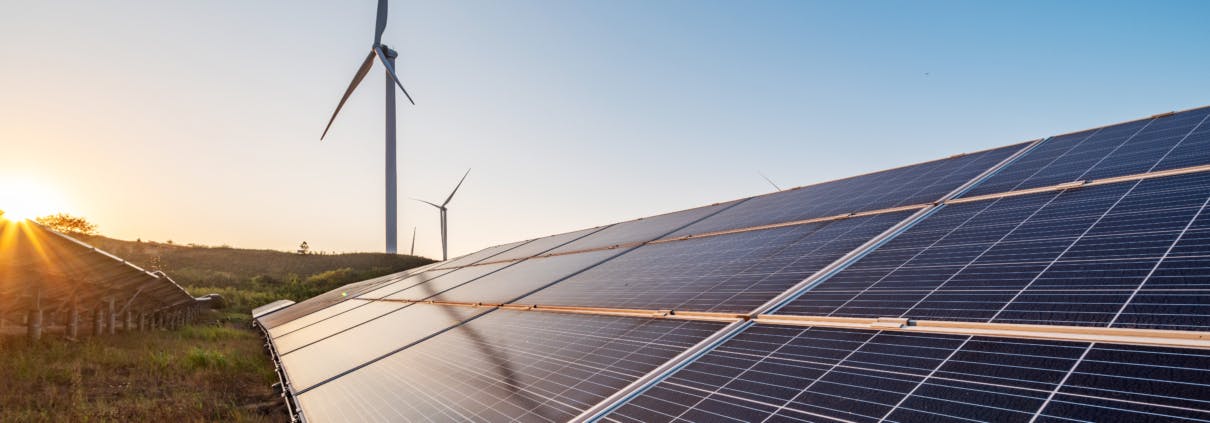How the Inflation Reduction Act could turbocharge the renewable energy sector

On August 16, the United State’s President Joe Biden signed the Inflation Reduction Act (IRA) of 2022 into law, marking the country’s first-ever piece of climate legislation.
At the heart of the IRA, which the president called “the biggest step forward on climate ever”, are billions of dollars in climate and energy spending that, if implemented, will reduce the US’ greenhouse-gas emissions by about 40% below their all-time high and take it two-thirds of the way to meeting its 2030 goal under the Paris Agreement.
With provisions to expand wind and solar production and bring climate-friendly technology such as electric vehicles closer to the financial reach of more Americans, the IRA has the opportunity to accelerate the US’ energy transition – but there are a few caveats.
What’s in the IRA?
The Inflation Reduction Act is a major legislative package that covers a wide range of areas, from drug prices to taxes. The bulk of the act, however, addresses climate protection, with a proposed investment of US$369bn in energy security and climate change programs over the course of the next 10 years. The key components of the energy provisions aim to lower energy costs in the US, increase American energy security and invest in decarbonizing all sectors of the economy via innovative solutions.
For consumers, the IRA proposes direct incentives to buy electric vehicles, energy-efficient appliances, and rooftop solar, including a US$4,000 consumer tax credit for lower/middle income to purchase used electric vehicles, and up to US$7,500 tax credits for new clean energy vehicles.
For manufacturers, the act includes over US$60bn to bring clean energy manufacturing onshore, as well as incentives to reduce inflation and the risk of future price shocks by bringing down the cost of clean energy and clean vehicles and relieving supply chain bottlenecks. This includes a US$10bn billion investment tax credit to build clean technology manufacturing facilities and US$20bn in loans for new clean vehicle manufacturing.
For the wider economy, the IRA replaces sticks with carrots by using subsidies, rather than carbon taxes, to address climate change. It will invest in carbon emissions reduction via tax credits for clean energy sources, with US$30bn in targeted grant and loan programs, and tax credits for clean fuels and commercial vehicles.
A further US$27bn has been earmarked towards a green bank to provide incentives for clean energy technology, while the IRA’s provisions include investments in the technologies needed for all fuel types, including hydrogen, nuclear, renewables, fossil fuels, and energy storage, to be produced and used in the cleanest way possible. This will mean grants and loans for companies reining in their emissions, and fees on producers with excess methane emissions.
What will be the impact on renewable energy?
The cost of both solar power – which the International Energy Agency calls the “cheapest source of electricity in history” – and wind power has dropped in recent years, and the new legislation is expected to push down costs even further.
Currently, very few solar panels are made in the US, but the IRA proposes to change that by providing incentives for new factories to make every subcomponent of the solar supply chain as well as paying those factories for every item that they produce. The IRA will restore the current renewable energy Section 451, which is a production tax credit (PTC), as well as Section 48, which is the investment tax credit (ITC), to their full pre- “phaseout” rates, just as these tax incentives were set to expire or wind down. This means greater incentives for generators. Another type of tax credit would be aimed at clean energy companies to deploy more solar, wind, and batteries on the grid, extending existing credits another 10 years.
What’s more, it will add an advanced manufacturing tax credit for manufacturers of solar and wind components in the United States. Meanwhile, clean-electricity tax credits will cause demand for renewable projects, as well as new solar panels, wind turbines, batteries, and other components, to boom. And because of the interconnected global nature of the economy, this could help those technologies become more easily available to other countries, too.
What will be the IRA’s impact on climate change?
Various estimates from the scientific community put the reduction in US greenhouse-gas emissions at about 30-40% below 2005 levels by 2030 as a result of the IRA, bringing the US closer to delivering President Biden’s pledge of a 50% reduction which he made last year.
However, for some environmental advocacy groups, the IRA doesn’t go far enough – especially because it includes multiple provisions that increase fossil fuel production. One group, the Climate Justice Alliance, has gone so far as to oppose it, arguing that its harms currently outweigh its benefits.
And while the IRA is a historic piece of legislation that signals to other nations that the US is now on board to address climate change, the country still has some way to go when it comes to catching up with climate action elsewhere.
Even with the Inflation Reduction Act, green investments by the United States since 2020 lag behind those of France, Italy, and South Korea when historical emissions are factored in, according to data from the University of Oxford’s Global Recovery Observatory.
Meanwhile, compared to its neighbors in the south, the US is only getting started when it comes to climate change legislation. In recent years, Mexico, Guatemala, Honduras, Colombia, Peru, Brazil, Argentina, Chile, and Paraguay have all enacted climate laws that establish measures to promote more sustainable economies and reduce emissions.
What’s more, much of the region is already playing a world-leading role in renewable energy generation. At a recent event hosted by Duke’s Energy Initiative and the Nicholas Institute for Environmental Policy Solutions and funded by the US Department of State, Christine Folch, assistant professor of cultural anthropology at Duke University, said: “In the United States we get about 20% of the electricity we consume through renewable energy resources. We get almost two-thirds of the electricity consumed by burning fossil fuels. There is only one region in the world where this is not the case, and that is Latin America.”
She added: “What that means is that as we’re thinking about a post-fossil fuel world, as we think about the politics and economics that come from a transition from relying mainly on fossil fuels to moving to renewable energy resources, the area of the world that can show us about what that might look like is Latin America.”
What is the Atlas viewpoint?
As a company truly committed to building a cleaner, more sustainable future, Atlas supports the US government’s action to advance renewable energy investment and take crucial steps to tackle the urgent crisis of climate change.
Whether the law can live up to its historic promise will now depend on whether these subsidies and massive investments can be deployed quickly and at scale. P
rivate sector companies such as Atlas, with experience in rolling out renewable energy infrastructure across the Americas, will play an important role in implementing the IRA’s vision.
Although the world still has some way to go in achieving the goals laid out in the Paris Agreement, the bold action in the IRA is a major inflection point, and we look forward to seeing more governments around the world take positive action that is good for the climate, and good for the future.
In partnership with Castleberry Media, we are committed to taking care of our planet, therefore, this content is responsible with the environment.
Share This Entry


